A couple of weeks ago we put the top down on the Miata and headed south to Saguaro National Park (#15 on my "100 Things to Do in Arizona" list) near Tucson. One of three national parks in Arizona, Saguaro National Park has 143 square miles of Sonoran desert covered with thousands of Giant Saguaros, the largest cacti in North America.
These majestic giants often reach heights of over 30 feet and when fully hydrated can weigh as much as 4800 pounds!
Saguaro National Park is divided into an Eastern District and a Western District with much of the city of Tucson in the middle. Although both districts have a lot of saguaros, they are noticeably different in terrain. We spent the morning in the Eastern District and then went to the Western District after lunch. Peak saguaro blossom time is mid-May to early-June so we were in for a real treat!
The tops of the saguaros looked like a bouquet of white flowers (close-up of one in lower right corner). We also saw blooming cholla (red and pink flowers) as well as some blooming prickly pear (yellow and orange flowers).
The night-blooming saguaro blossom, Arizona's state flower, attracts many birds as well as bats who like its nectar. Several times we parked the car on the side of the dirt road... and waited... and listened... and we were not disappointed!
A cardinal sang his sweet song from his perch high on a saguaro.
The cactus wren, Arizona's state bird, not only drinks the sweet nectar from the blossoms but also makes his home inside the cactus! A mature saguaro can be a condominium to many birds (note the holes!).
Although the park is home to, and protects, thousands of Giant Saguaros, there are many other varieties of cactus and desert plants there. Some were blooming; others were not- but all were beautiful!
The barrel cactus (foreground) had fruit, the prickly pear had blossoms and the ocotillo blossoms were dried up and beginning to fall.
The flowering ironwood trees (with their black barks!) were gorgeous!
Most people equate desert with cactus but a lot of wildlife also lives there. Although much of our time at Saguaro National Park was during the heat of the day (and it was 97 degrees in the afternoon!), we did spot several animals.
A family of javelina were spotted outside the visitor center in the Eastern District. A mom, dad and two little piglets were taking advantage of the shade made by the building. The park ranger assured me they are quite wild.
We spied this cute guy (ground squirrel) high atop a dead, decaying saguaro. He easily scampered up and down his perch.
What a cute jackrabbit! He stayed very still as he tried to hide in the underbrush- we almost missed him!
We watched this deer (by red arrow) scamper off and hide in the shade making him all but invisible!
We saw several families of quail. I love watching them scurry along the ground keeping their babies close by. This pair's babies are behind the cactus out of view.
The Western District was a bit more mountainous and "forests" of saguaros were more evident than in the Eastern District. Around every turn in the road were hundreds or thousands more towering saguaros.
Saguaros for as far as we could see!
Saguaros are slow growing with their rate of growth depending on the moisture they receive. Their shallow but expansive root system and one long tap root soaks up water. During the rainy season they visibly plump out as they store the water internally using it sparingly over the dry months.
Some mature saguaros have no arms and others have many arms. An average old saguaro would have five arms and be about 30 feet tall. The largest ones, with more than five arms, are estimated to be more than 200 years old.
This old man stands proud and tall!
Eventually the saguaros die. Arm by arm they wither and dry up until finally only the woody spine is left. Sometimes the spines are used for fencing material before it, too, decomposes.
This 100% natural, withering saguaro looks like a person!
This one, in a more advanced stage of decay, looks like the "Creature from the Black Lagoon!"
The skin of the saguaro is smooth and waxy and looks somewhat pleated. During the rainy season, the "pleats" expand with water giving it a less angular appearance. Although the skin is smooth, it is covered with spines that protect it.
The spines are prickly!
At last, the sun started its descent.
The royal giants stood out in silhouette against the sun.
The mountains and desert floor burst forth in brilliant color as the sun dipped lower and lower in the sky.
And then the sun was almost gone.
We had a delightful day exploring nature and marveling at God's creation. I think I saw more saguaros that day than I had in my entire life before that. Saguaro National Park is not just an Arizona treasure; it is a national treasure!
Thumb Up or Down: UP!!!!!! I can't believe I waited so long to go!
Miles Round Trip: 300.7 miles
Miles To Date: 5268.2 miles
Percent of List Completed: 56%
Date of This Trip: May 19, 2012
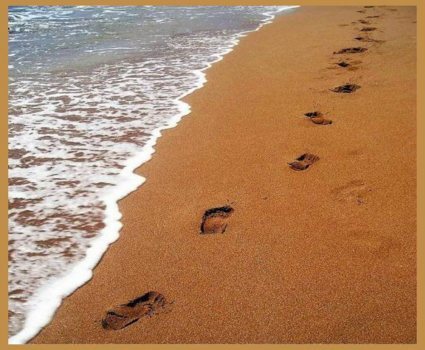



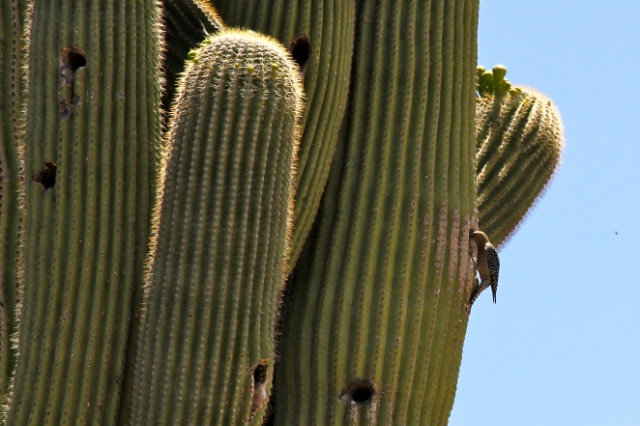
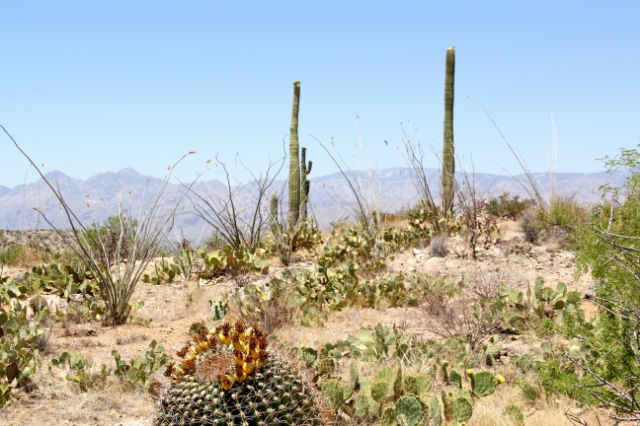


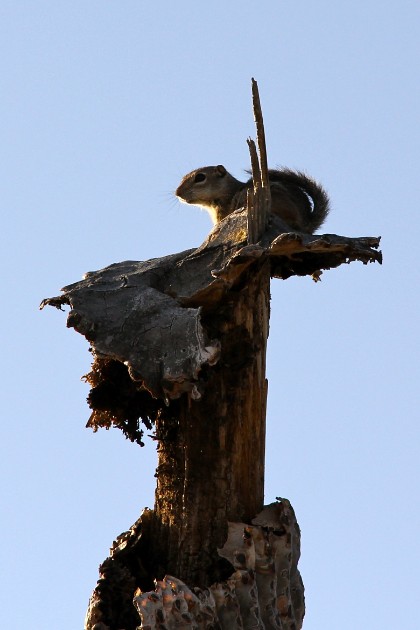

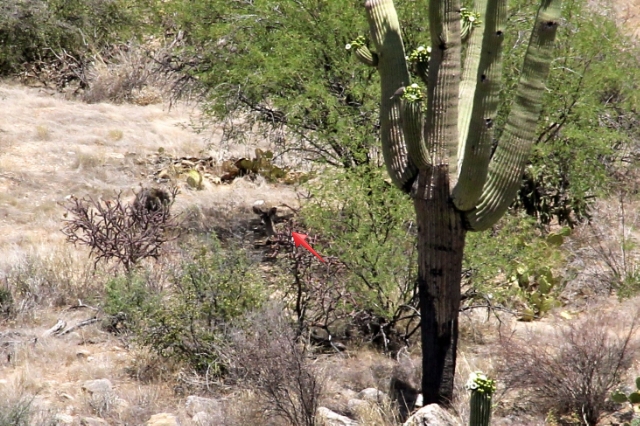

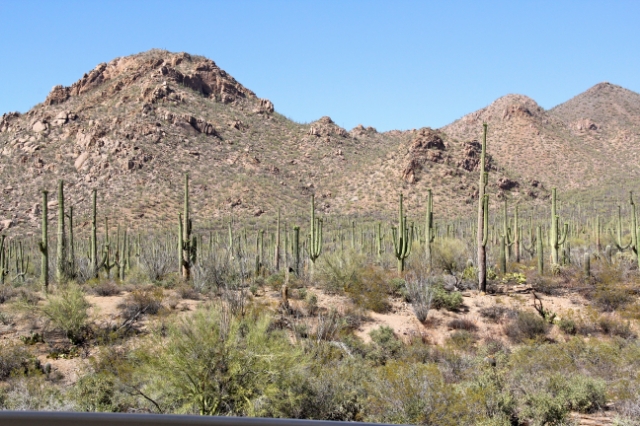
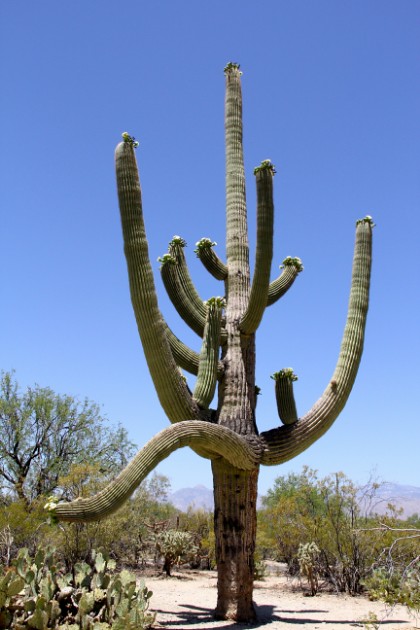
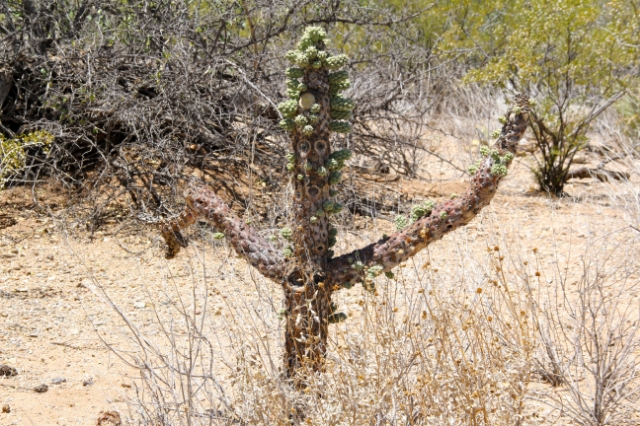
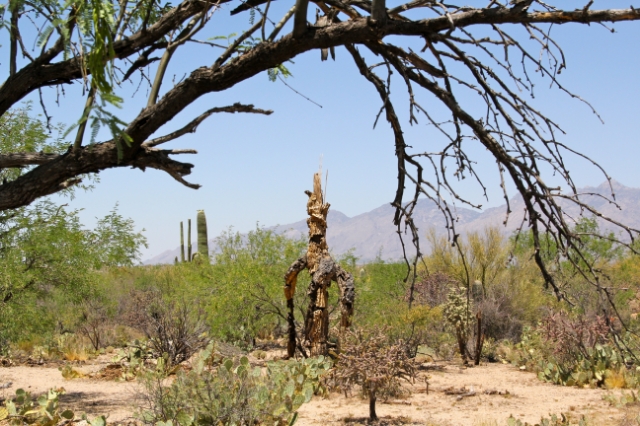
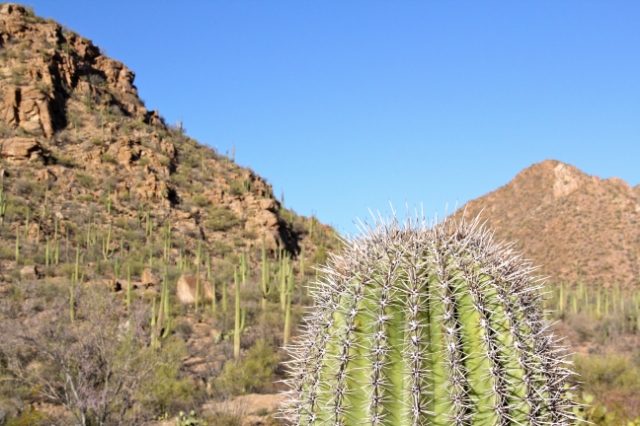
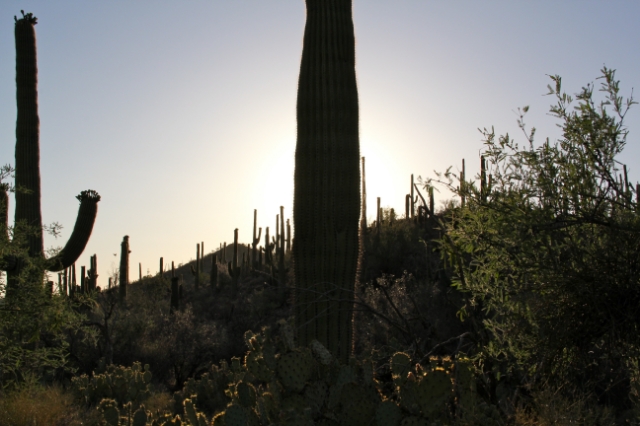
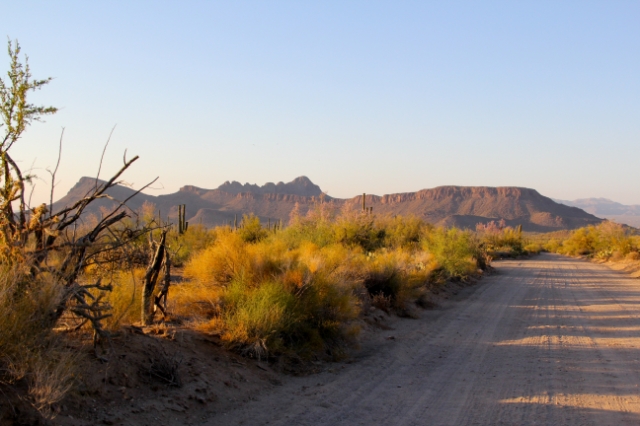
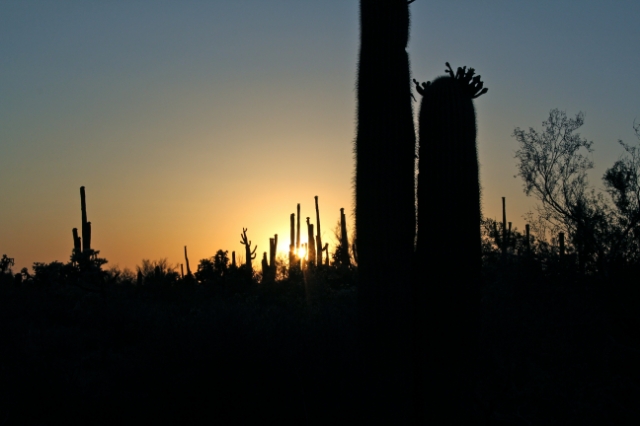
Truly amazing post. From the descriptions to the animal pictures (can't believe you caught a javelina, a rabbit and a deer) to the researched information provided - I say again, you really need to put this in book form. Missing one picture. The only other missing picture I noticed so far was on the 10/15/10 blog.
ReplyDelete